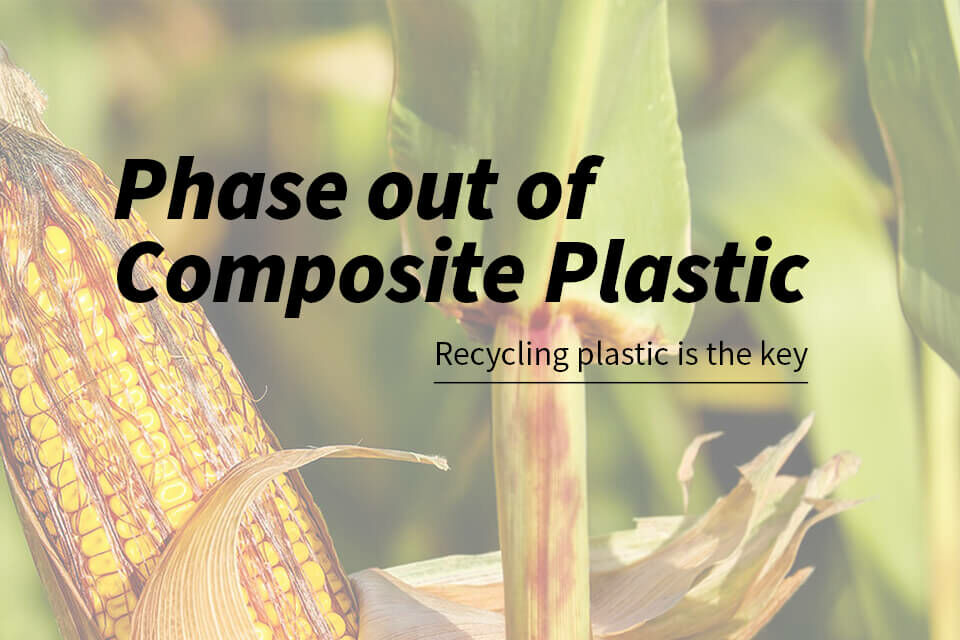Composite plastic materials will gradually disappear from the packaging industry.
To mitigate the environmental impact of the rapid growth in packaging waste, the European Union has introduced further regulations: the Packaging and Packaging Waste Regulation (PPWR).
Packaging that is less than 70% recyclable by mass is to be considered totally unrecyclable, and to be banned from 2030. Also, plastic packaging must contain at least 30% PCR (Post-Consumer Recycled) materials.
The EU points out that on average, each European generates nearly 180 kilograms of packaging waste per year, which of 40% is plastic and of 50% is paper.
Composite plastic is usually coded number 7
Plastic materials with code number 7 is the combination of all plastics that are difficult-to-classify. Including common materials like PLA (Polylactic Acid) and PC (Polycarbonate), as well as some other composite plastic materials. These less common plastics are not easily distinguished in the plastic recycling and reprocessing systems.
In recent years, some of these composite plastics have been widely promoted for their eco-friendly images as part of plastic reduction efforts. They are commonly made of general plastics and additive in several ways:
- PP (Polypropylene) with fiber glass /carbon fiber composite: Often used in the automotive and home appliance industries.
- PE (Polyethylene) with calcium carbonate: Used to produce thicker, biodegradable eco-friendly garbage bags commonly found in the market.
- PP with PLA: Most of the wheat-based plastic cutlery made from starch-based PLA. Since PLA cannot withstand temperatures above 60 degrees Celsius, by adding PP, the cutlery can avoid becoming soft or deforming when exposed to heat during use.
- PE or PP with bio-additives: This process often involves incorporating agricultural and fishery waste such as oyster shells, seashells, corn starch, rice husks, and wheat into plastic packaging materials.
Challenges of Composite Plastic Recycling
- In Taiwan, the Environmental Protection Administration (EPA) recognizes plastics numbered 1 to 6 as recyclable, while the recyclability of plastic number 7 depends on the type of plastic and the equipment available at local recycling facilities.
However, “#7 – Composite Plastics” is classified as non-recyclable, and the EPA recommends treating it as general waste.
- Composite plastics consist of a mix of different materials, making it difficult for most recycling facilities’ sorting machines to effectively separate them, leading to recycling failures. To improve the recycling rate of recyclable resources, plastics that are not suitable for recycling need to be treated as general waste.
- According to a report by Greenpeace in 2020, most waste treatment facilities in the United States only recycle high-value plastics such as PET (#1) and HDPE (#2). Although plastics numbered 3 to 7 are labeled as recyclable, they have low market value and lack recyclers’ capacity. As a result, many of them end up being landfilled or incinerated, and recycling them is very challenging. Therefore, plastics numbered 3 to 7 no longer meet the “Recyclable” labeling standard set by the US Federal Trade Commission (FTC).
How to Utilize Composite Plastics for Plastic Reduction Benefits
Although composite plastics do not meet recyclability standards and are unsuitable as single-use packaging materials, they can still be used for non-disposable applications. As a contribution to the plastic reduction efforts, “Composite Plastics” developed from renewable resources like oyster shells, rice husks, corn starch, can still be used as the material for products like toys, household appliances, or the casings of electronic devices (3C products).
Replace and reduce the proportion of conventional plastics in the non-recyclable products, thereby decreasing the consumption of Earth’s natural resources.

